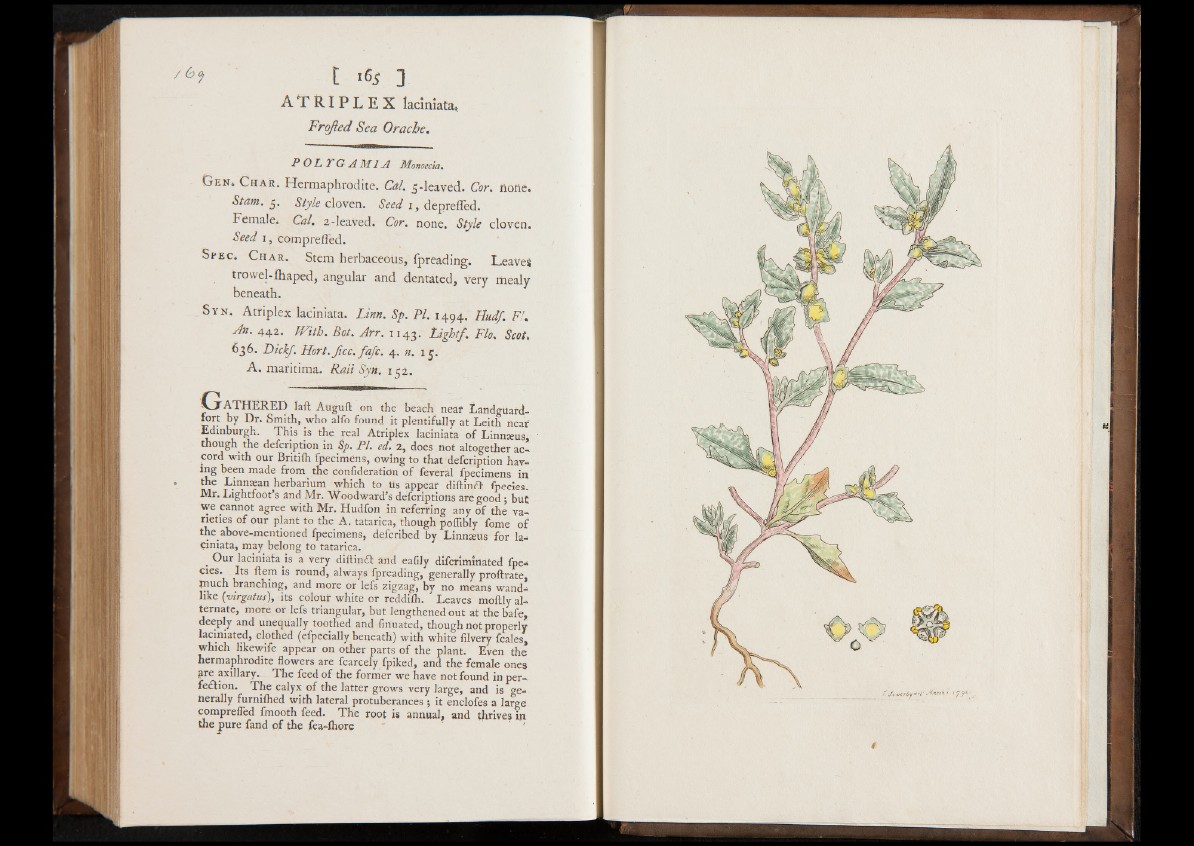
t 3
A T R I P L E X laciniata,
Fro/îed Sea Oracbe.
P O L Y G A. M 1A Monoecia.
G en* C har. Hermaphrodite. Cal. 5 -leaved. Cor. none.
S t am. 5. Style cloven. Seed 1, depreffed.
Female* Cal, 2-leaved. Cor. none. Style cloven.
Seed i s compreffed.
S p e c * C h a r . Stem herbaceous, fpreading. Leaves
trowel-Ihaped, angular and dentated, very mealy
beneath.
S y n . Atriplex laciniata. L inn. Sp. PI. 1494. Hud/. FU
A n . 442. W ith . Bot. A rr. 1143. L ig h t/. Flo. Scot*
6 3 6 . Dick/. H o rt.ß cc. fa ß . 4. n. 1 5 .
A . maritima. Rail Syn. 152.
G ,rATHERED fall Auguft on the beach near Landguard-
fort by Dr. Smith, who alfo found it plentifully at Leith neat
Edinburgh. This is the real Atriplex laciniata of Linnseus,
though the defcription in Sp. PI. ed. 2, does not altogether accord
with our Britifh fpecimens, owing to that defcription having
been made from the confideration of feveral fpecimens in
the Linnxan herbarium which to tis appear diftinct fpecies.
Mr. Lightfoot’s and Mr. "Woodward's defcriptions are good; but
we cannot agree with Mr. Hudfon in referring any of the va-
neties of our plant to the A. tatarica, though pofiibly fome of
the^ above-mentioned fpecimens, described by Linnaeus for laciniata,
may belong to tatarica.
. Our laciniata is a very diltinct and eafily difcrimirtated fpe-
cies. Its Item is round, always fpreading, generally proftrate
itnuch branching, and more or lefs zigzag, by no means wandlike
(virgatus), its colour white or reddifh. Leaves moftly alternate,
more of lefs triangular, but lengthened out at the bafe,
deeply and unequally toothed and finuated, though not properly
laciniated, clothed (efpecially beneath) with white filvery feales,
which likewife appear on other parts of the plant. Even the
hermaphrodite flowers are fcarcely fpiked, and the female ones
jare axillary. The feed of the former we have not found in perfection.
The calyx of the latter grows very large, and is generally
furnifhed with lateral protuberances ; it enclofes a large
comprefled fmooth feed. The root is annual, and thrives in
the pure fand of the fea-fhore